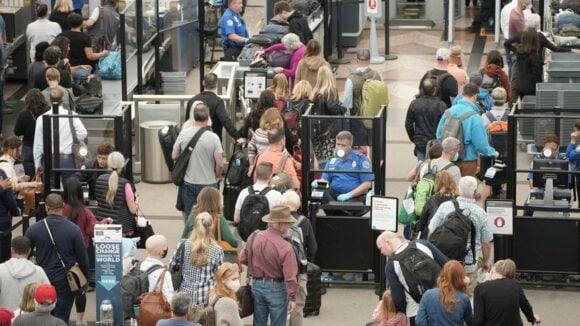
Delta jet
Airlines are looking for a record holiday travel season, with an average of 2.9 million passengers per day during Christmas week. But following that period, will we see a return to the traditional seasonality experienced by the industry? All indications point to 2023 travel topping 2019 levels during the busy holiday season, then dropping off in January and February.

We already see discounted fares for the first quarter of 2024, as advanced bookings have yield management systems lowering prices to generate traffic. Based on this early evidence, the post-pandemic surge and consistent upward movement in traffic may end during the first quarter, traditionally the lowest demand period of the year.
The traditional seasonality in the aircraft industry leads to losses during the 1st quarter, small profits during the second quarter, high profits during the peak summer season in the third quarter, and break-even during the fourth quarter, buoyed by Thanksgiving and Christmas- New Year holiday travel.
If we are indeed returning to seasonality, as our initial read on early indicators suggests, we could be looking at a difficult time, particularly for the more leisure-oriented carriers. Ultra-low-cost carriers like Spirit, Frontier, Allegiant, and Sun Country will likely see a challenging first quarter with significant losses and cash flow deficits. Spirit, already suffering financial difficulties, will be particularly hard hit.
Low-cost carriers like Southwest and JetBlue will likely see lower yields and potential first-quarter losses. Southwest already offers $39 one-way fares for travel in early 2024, underscoring the seasonality in demand.
The major carriers, Delta, United, and American, are better positioned with the return of business travelers who book at the last minute and typically pay higher fares. While yields will fall for the network carriers, they will not fall as much as the ULCCs or LCCs, as they are not as dependent on leisure travelers.
The good news is that the second and third quarters should be firm with seasonality and hopefully continue with higher traffic levels than in 2019. But despite beating pre-pandemic levels, the industry is still not back to where it should be, which is up about 20% from 2019 levels if we had continued with normal growth. It appears today that economic conditions and inflation may dampen travel demand. While we expect traffic growth in 2024, we no longer expect growth that outpaces normal rates. A gap between the pre-pandemic trend line and actual traffic will remain in 2024, and it will take the industry a bit longer to “get back on track.”
Views: 7




